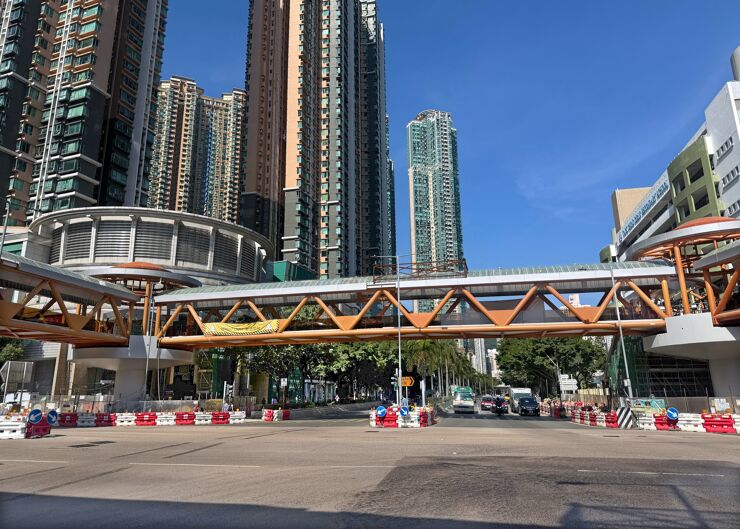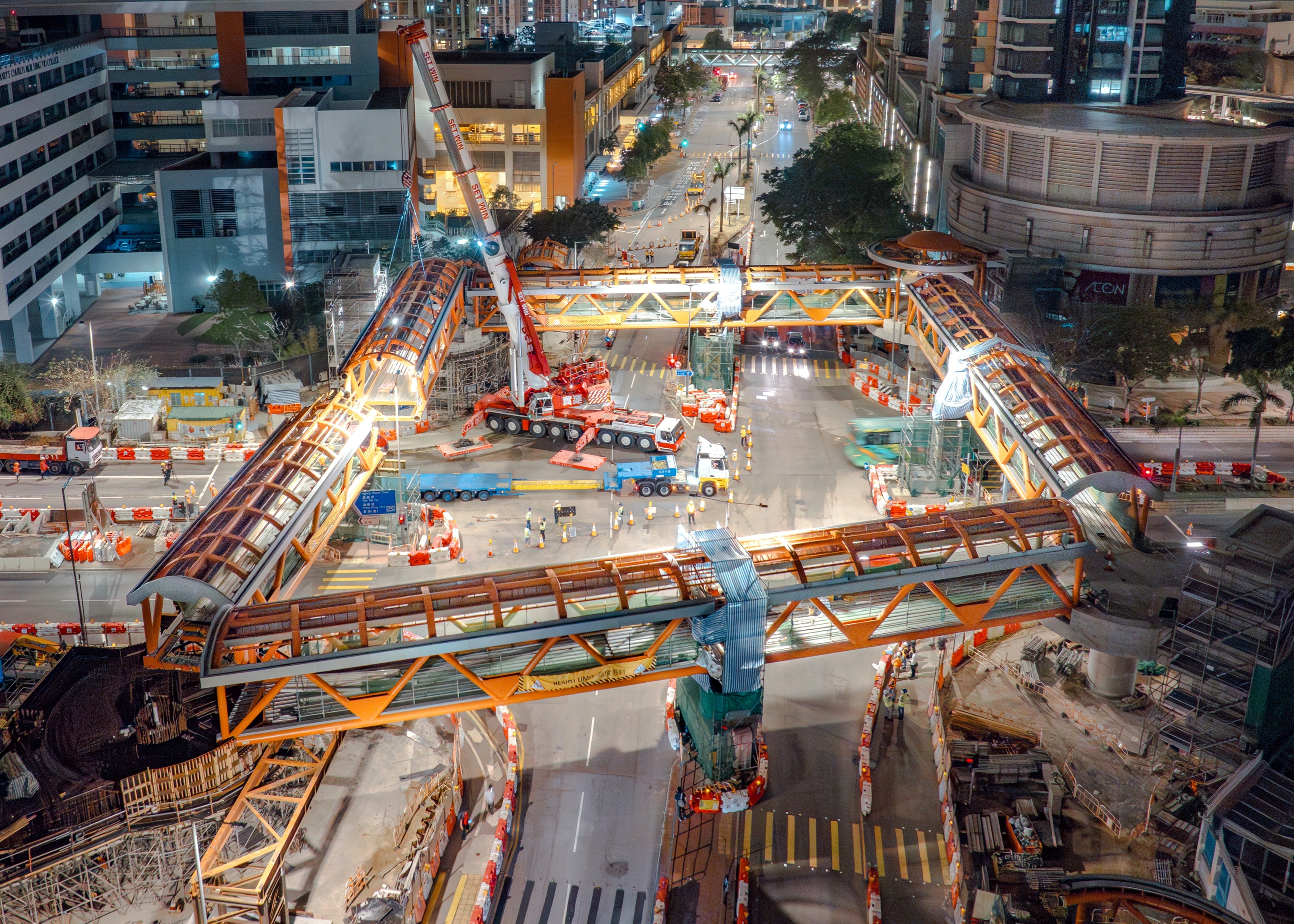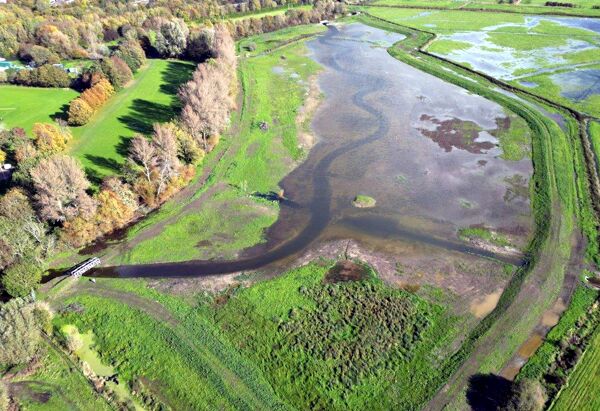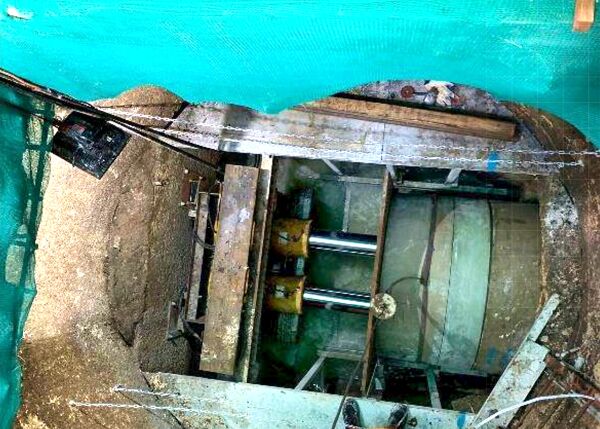
NEC has been adopted for constructing a major four-span footbridge system in Kowloon, Hong Kong. Located at the junction of Sham Mong Road and Hing Wah Street West in Sham Shui Po, the HK$218 million (£21 million) main works were completed on time and budget in December 2024.
The Civil Engineering and Development Department (CEDD) of the Government of the Hong Kong Special Administrative Region of China engaged contractor Wang Kee Joint Venture in July 2020 under an NEC3 Engineering and Construction Contract (ECC) Option B (priced contract with bill of quantities). CEDD’s South Development Office acted as the project manager and Mott MacDonald Hong Kong Limited was the supervisor.
 The contract comprised constructing bored pile foundations, four 4 m wide steel-framed footbridge spans ranging from 45 m to 58 m long (222 m in total), seven passenger lifts, four covered escalators and two covered staircases. Associated road works and ancillary works included footpaths, drainage, waterworks, electrical and mechanical works, landscaping and environmental mitigation measures.
The contract comprised constructing bored pile foundations, four 4 m wide steel-framed footbridge spans ranging from 45 m to 58 m long (222 m in total), seven passenger lifts, four covered escalators and two covered staircases. Associated road works and ancillary works included footpaths, drainage, waterworks, electrical and mechanical works, landscaping and environmental mitigation measures.
The footbridge system was planned as part of the West Kowloon Reclamation infrastructure in 1990s and was one of the last two engineering projects to be delivered under the scheme. The barrier-free, grade-separated link improves the walking environment and connectivity of surrounding developments as well as enhancing road safety and improving road junction capacity.
Collaborative working
CEDD chief engineer Clarence Yeung says the project was driven by the NEC contract requirement to work in the spirit of mutual trust and co-operation. ‘By focusing on clause 10.1, the project team worked proactively, superlatively and safely to achieve the common goal of “Delivery of a Successful and Environmental-friendly Project in a Safe Manner”.’
He says the risk inherent with the project, such as unforeseen ground conditions for the bored piling, was identified by the project team at the very beginning of the project. ‘With the NEC-inspired collaboration of the project team, the contractor rescheduled the pre-drilling works to a much earlier stage and discovered intermittent weak layers extending to 95 m below ground, which would require bored piles over 100 m deep.’
Yeung says the project team immediately sought expert advice from CEDD’s Geotechnical Engineering Office, while Mott MacDonald worked closely with the contractor to revise the conforming design to suit the site conditions in a practical way. ‘We eventually adopted enlarged pile bases founded on suitable rock at a shallower depth.’
He says the project team obtained speedy approval of the revised design from relevant authorities and the contractor swiftly mobilised its plant and equipment to implement the revised design. Through collaboration, the project team substantially reduced the overall depths of bored piles by 33% and achieved timely completion of the foundation works.
Mott MacDonald transport director Ole Wong says NEC also enabled the parties to develop a collaborative solution for a clash between an uncharted concrete surround of a 1.4 m diameter water main and a footbridge pile cap. ‘The scheme, with additional temporary support to allow early erection of the footbridge steel truss prior to completion of the pile cap, was worked out between the contractor, project manager and supervisor under the NEC spirit.’
Cost savings design
Wang Kee deputy general manager Vincent Lam says another example of NEC-inspired collaboration was the implementation of ‘cost savings design’ (CSD) for the pile caps. ‘With the adoption of an innovative wing wall design associated with a shallow shear-key system, the project team successfully reduced the overall excavation depth of two pile caps from 10.5 m to 7.5 m.’
He says the approach not only saved construction costs but also reduced the risk of potential ground movement caused by deeper excavation. ‘Implementation of CSD also resulted in a reduction of about 180 m3 of construction waste generated from the excavations.’
Lam says the use of a robotic frame-cutting and welding machine for the steel H-piles of the pile caps also enhanced productivity. ‘This project clearly illustrates the principles outlined in clause 10.1, which cultivates the spirit of mutual trust and collaboration. The project team worked together excellently and swiftly, resulting in timely delivery of an attractive and environmentally friendly footbridge system.’
Benefits of using NEC
- NEC requirement to work in a ‘spirit of mutual trust and co-operation’ resulted in the project team working collaboratively to achieve its common goal.
- NEC-inspired collaboration led to alternative designs for the piles, reducing depth by 33% and ensuring timely completion of foundation works.
- Other collaborative innovations included a novel wing wall design and shallow shear-key system to reduce the pile cap depth by 25%, which in turn reduced excavation waste.
Contact
- Clarence Yeung, Chief Engineer/S1, South Development Office, Civil Engineering and Development Department of the Government of the Hong Kong Special Administrative Region of China, Tel: +852 3842 7002. Email: cctyeung@cedd.gov.hk
- Ole Wong, Transport Director, Mott MacDonald (Hong Kong) Limited, Tel: +852 2828 5890. Email: ole.wong@mottmac.com
- Vincent Lam, Deputy General Manager, Wang Kee Joint Venture., Hong Kong, Tel: +852 2605 5179. Email: vincent.lam.wangkee@gmail.com



